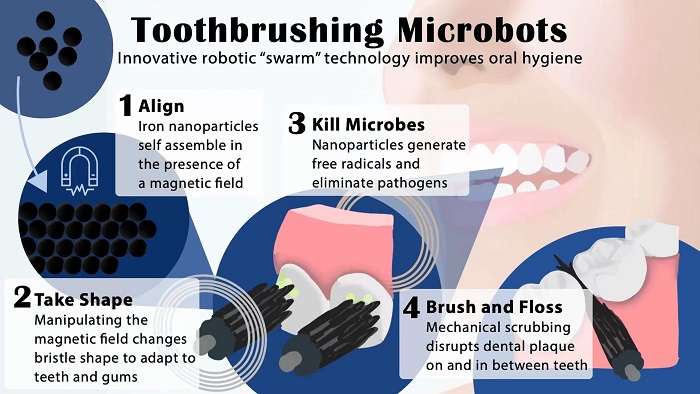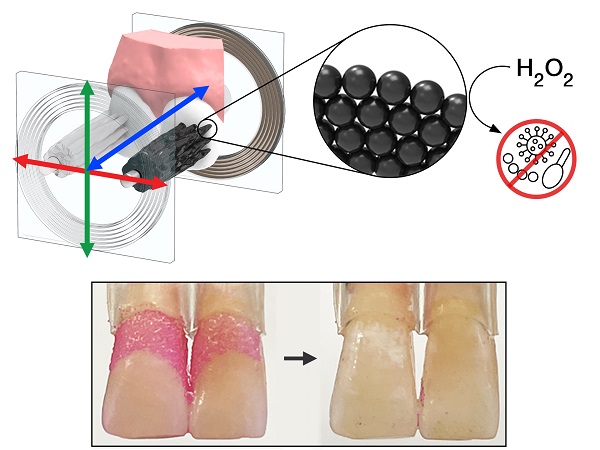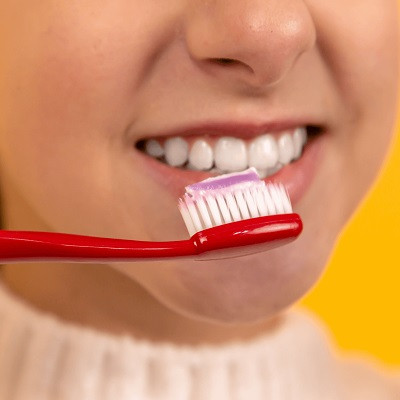Yes! you read that right. Researchers from the University of Pennsylvania are working on developing micro robots that may one day act as a toothbrush, rinse, and dental floss - all in one. It’s a system that could be particularly valuable for those who lack the manual dexterity to clean their teeth effectively themselves.
Experiments using this system on mock and real human teeth showed that the robotic assemblies can conform to a variety of shapes to nearly eliminate the sticky biofilms that lead to cavities and gum disease. The Penn team shared their findings establishing a proof-of-concept for the robotic system in the journal ACS Nano.
“Routine oral care is cumbersome and can pose challenges for many people, especially those who have hard time cleaning their teeth” says Hyun (Michel) Koo, a professor in the Department of Orthodontics and divisions of Community Oral Health and Pediatric Dentistry in Penn’s School of Dental Medicine and co-corresponding author on the study. “You have to brush your teeth, then floss your teeth, then rinse your mouth; it’s a manual, multistep process. The big innovation here is that the robotics system can do all three in a single, hands-free, automated way.”

In a proof-of-concept study, researchers from the School of Dental Medicine and School of Engineering and Applied Science shows that a hands-free system could effectively automate the treatment and removal of tooth-decay-causing bacteria and dental plaque.
The building blocks of these microrobots are iron oxide nanoparticles that have both catalytic and magnetic activity. Using a magnetic field, researchers could direct their motion and configuration to form either bristlelike structures that sweep away dental plaque from the broad surfaces of teeth, or elongated strings that can slip between teeth like a length of floss. In both instances, a catalytic reaction drives the nanoparticles to produce antimicrobials that kill harmful oral bacteria on site.
“It doesn’t matter if you have straight teeth or misaligned teeth, it will adapt to different surfaces,” says Koo. “The system can adjust to all the nooks and crannies in the oral cavity.”
The researchers optimized the motions of the microrobots on a small slab of toothlike material. Next, they tested the microrobots’ performance adjusting to the complex topography of the tooth surface, interdental surfaces, and the gumline, using 3D-printed tooth models based on scans of human teeth from the dental clinic. Finally, they trialed the microrobots on real human teeth that were mounted in such a way as to mimic the position of teeth in the oral cavity.

Arranged in bristle-like structures, a robotic microswarm of iron oxide nanoparticles effectively cleaned plaque from teeth. The nanoparticles have both magnetic and catalytic properties; catalyzed hydrogen peroxide produced free radicals that eliminated tooth decay-causing pathogens as well.
On these various surfaces, the researchers found that the microrobotics system could effectively eliminate biofilms, clearing them of all detectable pathogens. The iron oxide nanoparticles have been FDA approved for other uses, and tests of the bristle formations on an animal model showed that they did not harm the gum tissue.
Indeed, the system is fully programmable; the team’s roboticists and engineers used variations in the magnetic field to precisely tune the motions of the microrobots as well as control bristle stiffness and length. The researchers found that the tips of the bristles could be made firm enough to remove biofilms but soft enough to avoid damage to the gums.
The customizable nature of the system, the researchers say, could make it gentle enough for clinical use, but also personalized, able to adapt to the unique topographies of a patient’s oral cavity.
To advance this innovation to the clinic, the Penn team is continuing to optimize the robots’ motions and considering different means of delivering the microrobots through mouth-fitting devices.
Read the original article on Times Now.
